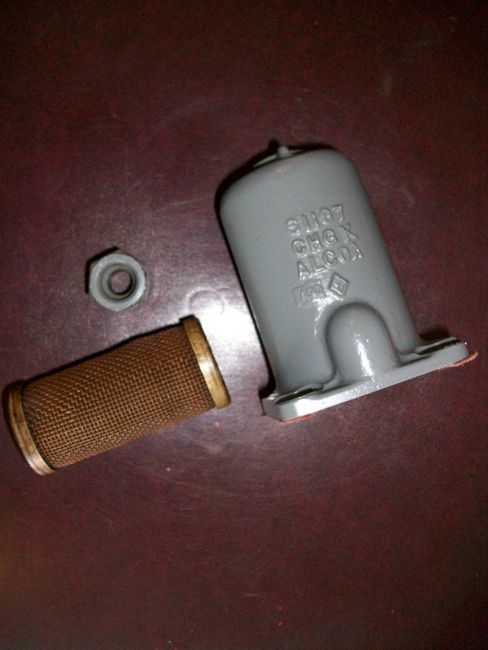lostpilot28
Well Known Member
I'm still trying to get my oil temps a bit lower, and so I took the advice of another builder and checked out my oil-temp sender then my Vernatherm. The oil temp sender (reading from my MGL EFIS) was within 1 degree of my digital meat thermometer, so I'm good to go with that.
The Vernatherm is a different story, though. When I took it out, I looked inside the oil filter adapter and noted that the gasket seems to be interfering with the Vernatherm seating in the oil hole. See the first picture below. In the first 2 pictures, you can see the edge of the gasket is actually "dimpled" around the edges from where the Vernatherm contacted it. I'm guessing that the upper 1/3rd of the hole didn't seal, and this could be my problem.
The 2nd picture is what I did to try and correct this with the new gasket, and the 3rd picture is with everything put back together. Note that there is a lot more clearance around the hole in the last picture.
I have 3 questions from this whole experience, and I would greatly appreciate any help.
1 - Is it OK to trim the gasket like I did? Has anyone ever seen the oil adapter gasket block the hole like that?
2 - I couldn't find in my engine manual a torque value for the Vernatherm. Does anyone know what it is?
3 - My Vernatherm had a flat aluminum (?) washer under the head. No copper gasket. Is that OK? Is it OK to reuse it?
Thanks in advance!



The Vernatherm is a different story, though. When I took it out, I looked inside the oil filter adapter and noted that the gasket seems to be interfering with the Vernatherm seating in the oil hole. See the first picture below. In the first 2 pictures, you can see the edge of the gasket is actually "dimpled" around the edges from where the Vernatherm contacted it. I'm guessing that the upper 1/3rd of the hole didn't seal, and this could be my problem.
The 2nd picture is what I did to try and correct this with the new gasket, and the 3rd picture is with everything put back together. Note that there is a lot more clearance around the hole in the last picture.
I have 3 questions from this whole experience, and I would greatly appreciate any help.
1 - Is it OK to trim the gasket like I did? Has anyone ever seen the oil adapter gasket block the hole like that?
2 - I couldn't find in my engine manual a torque value for the Vernatherm. Does anyone know what it is?
3 - My Vernatherm had a flat aluminum (?) washer under the head. No copper gasket. Is that OK? Is it OK to reuse it?
Thanks in advance!



Last edited:








